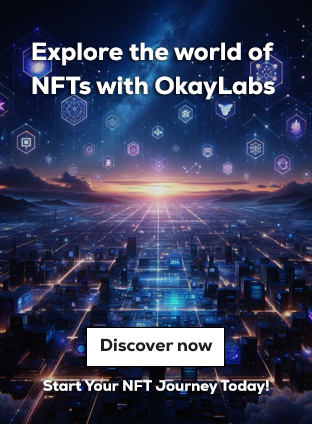Stablecoins are already a massive part of the crypto landscape, with a market cap hovering around $204 billion. But despite their size, the sector is still grappling with a big issue: centralization. While some stablecoins promise to bring stability to the volatile crypto world, they often rely on centralized entities, leaving many users questioning whether the technology can truly live up to its decentralized ideal. Enter Reeve Collins, the founder of blockchain neo-bank WeFi, who believes the next evolution of stablecoins will involve two game-changing innovations: AI agents and account abstraction.
In a recent interview, Collins shared his vision for how these technologies will transform the way people interact with stablecoins, making them simpler to use and more accessible for the masses. As AI simplifies the management of decentralized finance (DeFi) operations, users will no longer need to worry about executing complex trading strategies or actively managing their assets. Instead, stablecoins will become a seamless part of daily life—attractive for both new and seasoned crypto users.
The Rise of Next-Gen Stablecoins: From Complexity to Simplicity
According to Collins, the introduction of AI and account abstraction will eliminate much of the technical complexity that currently surrounds the use of stablecoins. As these technologies simplify the process, a new generation of yield-bearing assets will emerge, including synthetic dollars, algorithmic stablecoins, and other real-world assets.
“Once the technical barrier to entry is lowered, these yield-bearing instruments will compete for investor attention because they’re easier to use and offer yield opportunities,” Collins explained. “When the application layer gets more mature and when AI is integrated, all of the complexity in this space will be gone. The only thing that will drive which token to use is which one makes you the most money and which one is the easiest to use.”
In essence, the future of stablecoins looks like a world where, rather than focusing on technical details, users will simply pick the tokens that maximize their returns and are the easiest to use. With AI agents handling the heavy lifting of managing portfolios, yield farming, and trading, anyone—even those with minimal crypto knowledge—could participate in DeFi.
The Challenges of Overcollateralized Stablecoins
Right now, most users rely on stablecoins backed by overcollateralized assets—usually fiat reserves or short-term cash equivalents. These stablecoins aim to mimic the stability of the US dollar but typically offer little (if any) yield in return. The challenge with these types of stablecoins is that, while they are less volatile and considered “safe,” they don’t provide the same potential for profit as other DeFi products.
But Collins sees a future where the emphasis shifts from just being “safe” to being “profitable.” As AI-driven management tools make it easier to engage with these products, the focus will be less on just maintaining the peg to fiat and more on creating stablecoins that are not only stable but also lucrative.
Regulatory Scrutiny: A Potential Roadblock for Traditional Stablecoins
Of course, no discussion about stablecoins would be complete without mentioning regulation. While stablecoins have been pitched as tools to extend the US dollar’s dominance in the digital world, they’ve drawn increasing scrutiny from regulators, particularly in the United States.
On December 6, the U.S. Financial Services Oversight Council (FSOC) released a report detailing the systemic risks of stablecoins, particularly those that are overcollateralized. The report highlighted that these stablecoins are vulnerable to “withdrawal runs”—essentially, the risk that users may panic and withdraw their funds at once if there isn’t adequate risk management in place.
Adding to the regulatory pressure, Coinbase recently delisted Tether’s USDT stablecoin in the European Union to remain compliant with the EU’s Markets in Crypto-Assets (MiCA) regulatory framework. According to a Coinbase spokesperson, the exchange would reconsider its stablecoin listings once they achieve MiCA compliance. This shift underscores the growing importance of adhering to global regulatory standards as crypto continues to evolve.
Interestingly, a Kaiko report found that MiCA-compliant stablecoins now dominate the European market. Circle’s USDC holds around 91% of the stablecoin market share in the region, signaling a clear trend toward regulatory alignment.
What’s Next for Stablecoins?
So, what does the future hold for stablecoins in this rapidly evolving landscape? Collins’ predictions point to a more user-friendly and yield-generating stablecoin ecosystem, driven by AI and account abstraction. As the market matures and the barriers to entry lower, the demand for next-gen stablecoins will rise. These stablecoins won’t just be tools for stability—they’ll also be instruments for growth, as users seek out the most profitable options available.
While the current stablecoin market is still dominated by traditional overcollateralized assets, the winds of change are already blowing. With AI helping users navigate the complexities of decentralized finance and account abstraction allowing for more seamless interaction with DeFi protocols, the stablecoin space is on the brink of a major transformation. But as always, regulatory developments will play a crucial role in shaping the future of these digital assets.
In the end, the evolution of stablecoins could be the key to unlocking a more accessible and efficient decentralized financial system, one where users can easily earn yield and participate in the broader crypto economy—without needing to become experts in the technical aspects of the space.
Stablecoins may have started as a way to bring stability to crypto, but with the rise of AI and simpler user experiences, they may just be poised to reshape the entire digital economy.



